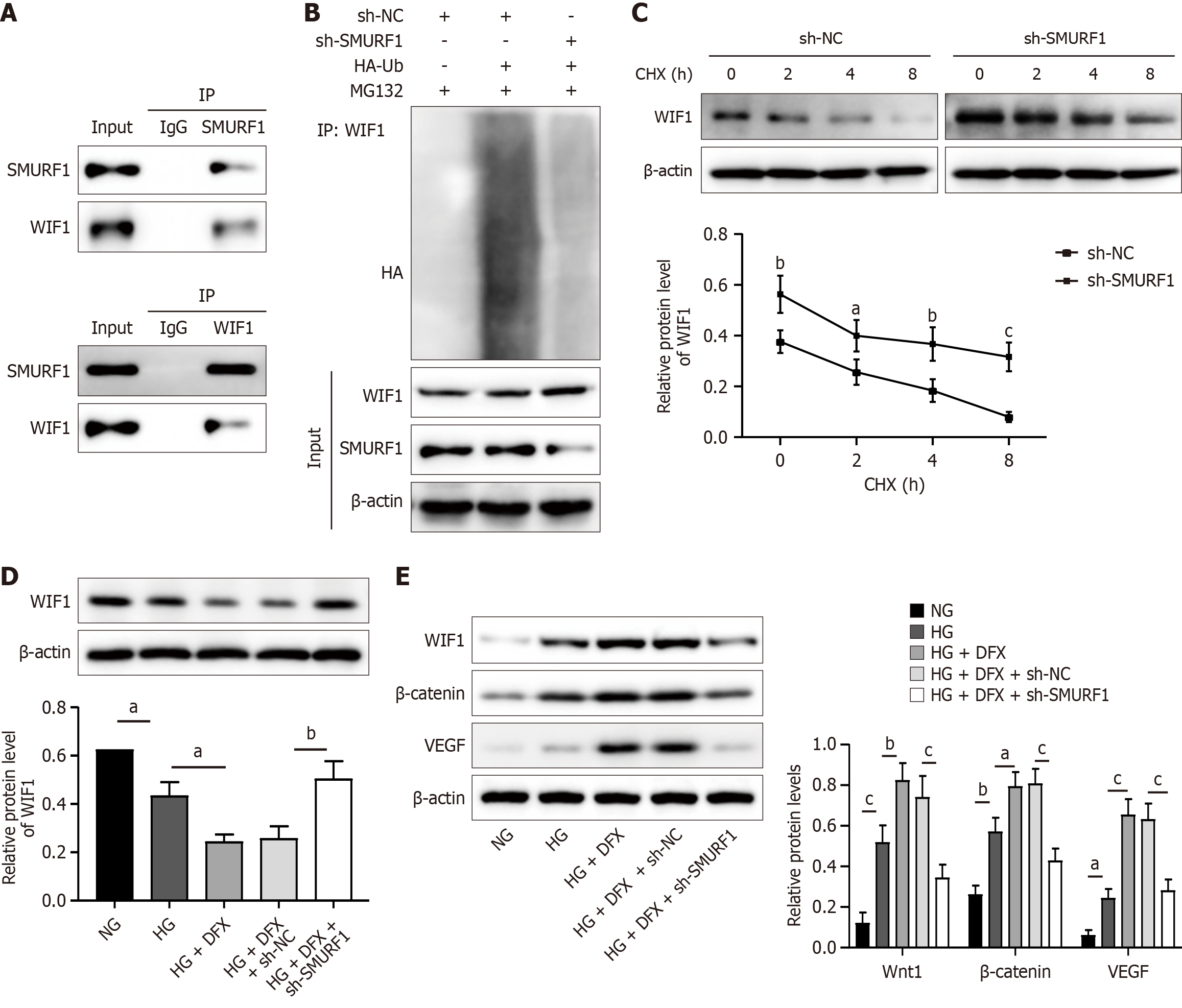Copyright
©The Author(s) 2025.
World J Diabetes. Mar 15, 2025; 16(3): 101328
Published online Mar 15, 2025. doi: 10.4239/wjd.v16.i3.101328
Published online Mar 15, 2025. doi: 10.4239/wjd.v16.i3.101328
Figure 3 SMAD-specific E3 ubiquitin protein ligase 1-mediated ubiquitination degradation of WNT inhibitory factor 1 activated the Wnt/β-catenin-vascular endothelial growth factor signaling pathway.
A: ARPE-19 cells were collected, followed by the interaction between SMAD-specific E3 ubiquitin protein ligase (SMURF) 1 and WNT inhibitory factor 1 (WIF1) was verified by the Co-immunoprecipitation (Co-IP) method; B: The SMURF1 knockdown construct or vector was transfected into ARPE-19 cells, followed by the Co-IP method for detecting the ubiquitination level of WIF1; C: The SMURF1 knockdown construct or vector was transfected into ARPE-19 cells, and then cells were treated with Cycloheximide (50 ng/mL) for 0, 2, 4, and 8 hours, followed by the protein level detection of WIF1 by western blot; D: The SMURF1 knockdown construct or vector was transfected into ARPE-19 cells, and cells were then treated with normal concentration of glucose (NG), high concentration of glucose (HG) or desferrioxamine mesylate (DFX), followed by western blot for the detection of WIF1 expression; E: The SMURF1 knockdown construct or vector was transfected into ARPE-19 cells, and cells were then treated with NG, HG, or DFX, followed by western blot for the detection of Wnt1, β-tcatenin, and vascular endothelial growth factor. The experiments were repeated three times. aP < 0.05, bP < 0.01, cP < 0.001. SMURF1: SMAD-specific E3 ubiquitin protein ligase 1; WIF1: WNT inhibitory factor 1; NG: Normal concentration of glucose; HG: High concentration of glucose; DFX: Desferrioxamine mesylate.
- Citation: Liang LF, Zhao JQ, Wu YF, Chen HJ, Huang T, Lu XH. SMAD specific E3 ubiquitin protein ligase 1 accelerates diabetic macular edema progression by WNT inhibitory factor 1. World J Diabetes 2025; 16(3): 101328
- URL: https://www.wjgnet.com/1948-9358/full/v16/i3/101328.htm
- DOI: https://dx.doi.org/10.4239/wjd.v16.i3.101328









